Introduction
There is a relatively small number of companies in the world that focus on the edge of the State of the Art. Think, for example of companies that develop and manufacture supercars. These companies constantly push the design and manufacturing limits to achieve more speed, better breaking, more responsive and more precise steering, better suspensions, better tires, improved ergonomics, and so on.
Pushing all the processes and technologies necessary to produce and support a leading edge product poses significant financial, technical and production risks. There are multiple challenges to overcome and in the end, it can be quite difficult and expensive to produce the product. These are some of the many reasons why leading edge products almost always command a high price.
One can find companies that are focused on pushing the State of the Art in a number of different areas: Sporting equipment, audio equipment, new materials, medical equipment, automobiles, computers, etc. And of course: Photography.
PhaseOne is without a doubt a company that lives on the edge of the State of the Art and continues to push design, technology and manufacturing techniques to higher and higher levels of excellence.
Living on the edge of the State of the Art typically requires serious passion and a heavy commitment to satisfying and even surperseding the needs and wants of the most demanding customers. It requires very hard work. It requires superior brain power, teamwork, technical and organizational skills. It also requires vision and inventiveness to solve problems no one has solved before.
Often times a leading edge company also develops new tools and invents new technology, new features or procedures that allow customers to have completely new capabilities and/or do things in completely new and innovative ways.
I can think of no other Photographic equipment company more dedicated to living on the edge of the State of the Art than PhaseOne. Of all the digital camera gear and editing software I have used, I have never found a system that can match the image quality, construction quality, or set of tools that PhaseOne has provided at specific points in time. The latest offering from PhaseOne, the XF IQ4 system is no exception.
There are several IQ4 backs available in the system, but I will focus on the IQ4 150 back which is the one I have been using for the past 6 months or so.
A new platform
PhaseOne realized that in order to continue to stay ahead of all other camera companies it was necessary to develop a new more powerful platform. Therefore, although externally the IQ4 backs look remarkably similar to their predecessors, internally the IQ4 platform is a completely different animal. It is a complete redesign. Almost all of the parts are new and different. The new platform has a lot more memory and very significantly higher processing power versus the IQ3 backs. This allows PhaseOne engineers to improve image quality further and to add new features and tools that were not possible to implement with the former platforms.
There is room for future growth with this platform, so it seems that there will not be another complete redesign of the platform for a while.
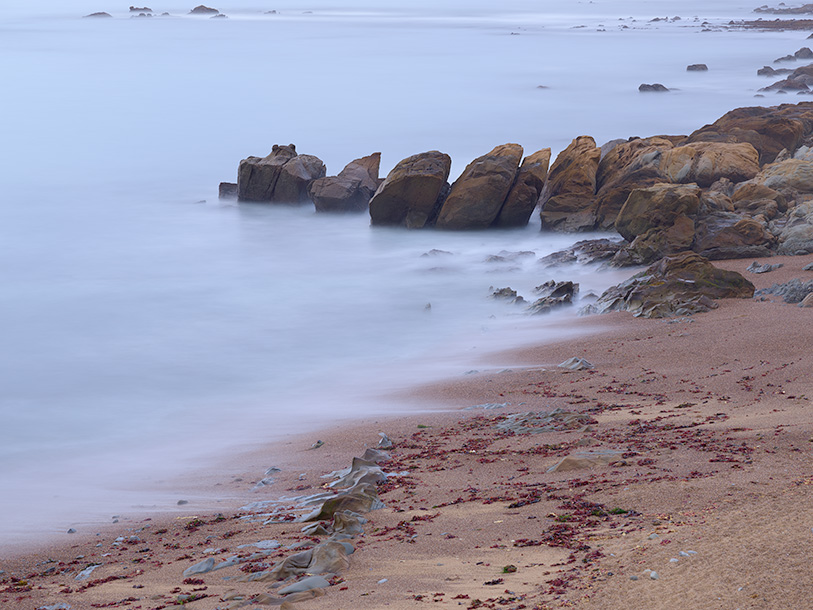
Beach and Rocks near Pescadero CA, 1m39s, Automated Frame Average
The IQ4 150
The IQ4 150 is one of the backs offered with the new platform. At 151 Megapixels, it is the highest Megapixel count digital back available. Besides all the advanced electronics of the new platform, it sports a new backlit sensor and two slots, one for an XQD card and one for an SD card. The cards can be used in a variety of combinations with each card slot being assigned to be either the primary, the secondary, overflow, RAW file, JPEG file and so on.
A full description of all the IQ4 backs, or a detailed technical and operation guide to the IQ4 150 back is beyond the scope of this article. Readers interested in this information can click here to obtain it directly from the manufacturer.
I was very cautious in my decision regarding the IQ4 150. This is because I was highly satisfied with my IQ3 100 Trichromatic and I had not thought of any reason to acquire a new back when the IQ4 platform was announced.
I was particularly concerned about the new sensor being the first backlit sensor offered for Medium Format. In the past, I have tested cameras with first generation new technology sensors that have been touted to be better than their predecessors, only to find that either the colors were terrible or they had some other anomalies. In case you are wondering, I have seen this happen in all formats, 35 mm, in-between formats (larger than 35 mm but smaller than Medium Format), as well as Medium Format.
Given how good the IQ3 Trichromatic back is, and the fact that I was also totally satisfied with the resolution, the color, the low noise levels and the dynamic range of my Trichromatic back, why would I consider something else?
It was with a great deal of skepticism that I attended a small event with a demonstration of the new IQ4 backs. One of the top technical officers of PhaseOne came to the meeting to help with the demonstration and to answer questions.
After the demonstration was over, and most people had left, I spent a good amount of time with the top officer from PhaseOne. We went over many details of the new IQ4 platform before we shot a number of identical images by swapping the IQ4 150 back with my Trichromatic back.
We then compared and evaluated the RAW files in CaptureOne on a calibrated monitor.
There were several things that impressed me:
- The noise levels were much lower and the image quality in general was quite noticeably better at high ISO settings versus the IQ3 Trichromatic.
- Even at base ISO, the IQ4 150 images had a look that was visually cleaner and smoother than the IQ3 Trichromatic.
- With extremely short lenses like the 23 mm Rodenstock on a CAMBO technical camera, lens cast was almost absent. All I could see was a slight light loss near the edges with a very minor color cast. The fact that the color cast was so minor was remarkable. Some photographers may actually choose to forego lens cast correction altogether with technical cameras.
- The color was outstanding. No, it was not identical to the Trichromatic, but overall it seemed to be at least as good and possibly slightly better in some areas.
We then chatted about a number of potential features and new functions that one could dream up coming down the pike, given the capabilities of the IQ4 platform. The possibilities are really exciting and I hope that some of these potential features will come to fruition.
At the end of this process I knew I had to move on from my beloved IQ3 Trichromatic to the IQ4 platform, and more specifically to the IQ4 150.
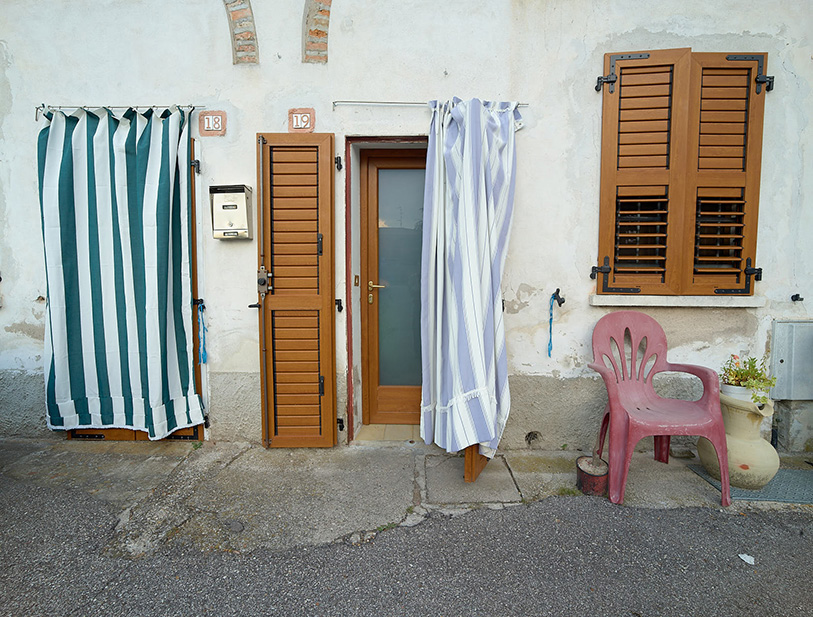
The Neighborhood. Vicenza, Italy
CAMBO WRS 1600 camera with Rodenstock 23 mm lens and PhaseOne IQ 4 150 back.
Thanks to the new IQ4 150 back, he color accuracy and dynamic range in this image are remarkable.
Using the XF IQ4 150 System
I purchased one of the first production units of the IQ4 150.
PhaseOne made it clear to early customers that the firmware at that time was still somewhat limited and a number of firmware updates would be released in the upcoming months.
Even though I was somewhat frustrated by the very basic initial functionality, I got an immediate taste of the superb image quality of the back. The combination of the color rendition, dynamic range, lack of noise, high ISO performance and resolution make this without question the device that delivers the best photographic image quality I have ever experienced.
Over the past 6 months, there have been a number of firmware updates for the XF camera body and the IQ4 backs . The system has finally “come into its own” with more overall functionality than the prior systems.
Based on the fact that this is a new and much more powerful platform than anything we have seen before, as well as the history of PhaseOne listening to customers and periodically introducing firmware updates based on their inputs, I expect the XF/IQ4 system to continue to evolve and improve.
The current combination of the XF camera body and the IQ4 150 back make what I consider to be the most versatile, most powerful, highest quality camera system available today. It’s built like a tank, smooth as silk, extremely refined, very well thought out and the images stun me with their superb quality every time I see them.
There is one function in particular that I believe breaks new ground: Automatic Frame Averaging.
I would like to spend some time exploring this new capability.
Frame Averaging
What is Automatic Frame Averaging?
It is a new function where the camera captures a large number of images and then averages all the data from the individual images to produce one final “averaged image”.
The “averaged images” in this article, including the main image at the beginning of the article) were taken using total exposure times between one and 2 minutes. Each individual image was shot at shutter speeds between 1/30th and 1/60th of a second. The total number of exposures was roughly between 140 and 300 before a final “averaged image” was obtained.
Let us pause here to think about this:
Each image is a full resolution 150 Megapixel image. This size image contains a lot of data! The camera is able to shoot hundreds of images of this size at very high speed (for MF), average them on the fly (as it continues to shoot) and deliver a final image a fraction of a second after the end of the last exposure. This is stunning, and a true testament to the computing capabilities of the IQ4 platform.
Frame Averaging is extremely easy to use. Just swipe from right to left on the digital back touchscreen and select it. Determine the proper aperture and shutter speed for a single image, select the total time you want to make exposures and go. Before you start, the display shows you how many exposures will be made. At the end of the process, you hear the mirror go back down and by the time you navigate to view your images the final “averaged image” is already saved to your card and you can view it on the screen.
So what does this new function do for a photographer?
Well, for starters, it allows us to shoot images with an effect very similar to a long exposure under bright lighting conditions without requiring the use of any filters. This is what I did for some of the images in this article.
Notice I use the words “very similar”, because I am not sure the effect is identical to a long exposure. Like most tools and processes in photography, each has a look of its own.
Also, like every other tool in photography, once available it is up to the photographer to figure out all the ways to use it. I have started to play with this tool only recently and besides the effect similar to a long exposure, I have discovered that bringing objects or people in and out of the field of view during the exposure time produces new visual effects I have never seen before, so this could be another area to explore. I am sure photographers will find their own unique “tricks” and styles to do beautiful things with this tool.
As an example, the two completely unedited images below show the difference between a single shot and a Frame Averaged version of the same scene.
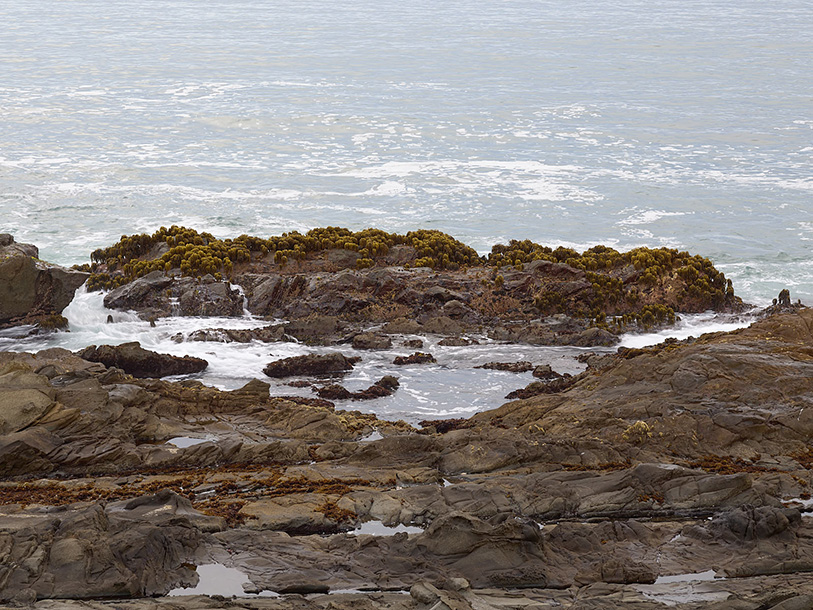
Rocks and Tide Pool
Single Shot version
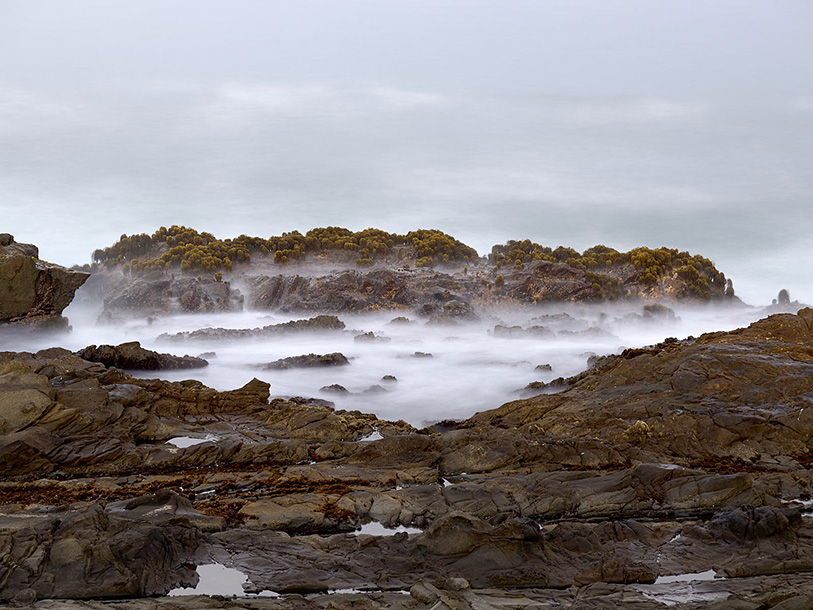
Rocks and Tide Pool
Frame Averaged version
An observant reader will notice that the rocks in the foreground of the “averaged image” are darker. This is because the clouds were moving quite fast and the light changed. Had the light remained the same, the foreground rocks would look identical in the two images. Only the moving parts of the image would look different.
Why is Frame Averaging Important?
I believe Frame Averaging is important not just because it is a very useful and beautiful tool, but also because it is a harbinger of things to come. It is the first implementation of a new function using the substantial computational capabilities of the IQ4 platform. It also gives us a glimpse of what is to come using the combination of optical and computational photography at the very high end.
I believe that between all the creative photographers that use PhaseOne cameras and the dedicated team in Denmark, Frame Averaging is only the first of a number of new functions that will have a very important impact on the way we all make images.
Whether you are a PhaseOne user or not, over time some of this functionality is likely to eventually trickle down to other cameras, so the impact I am talking about will spread well beyond a single brand,
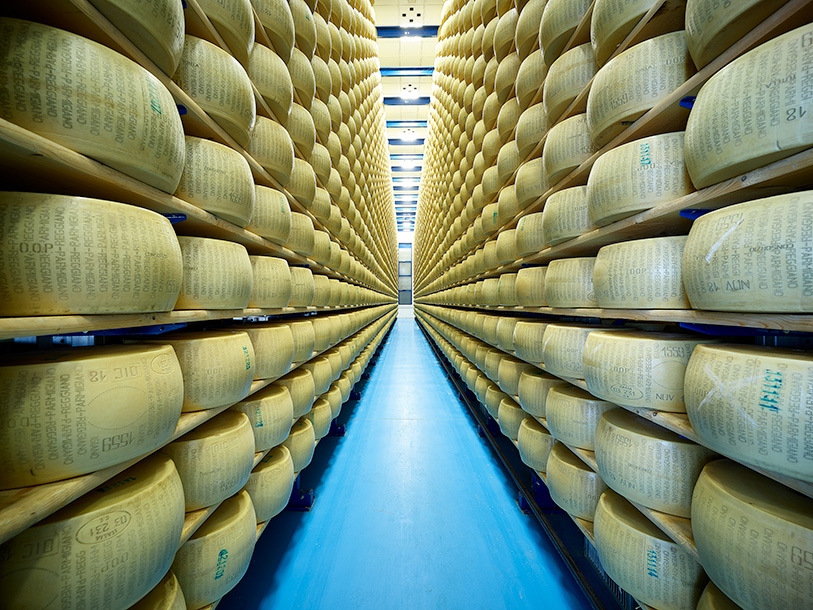
Say Cheese!
Pegogna, Italy
CAMBO WRS 1600 camera with Rodenstock 23 mm lens and PhaseOne IQ 4 150 back.
Conclusion
This is a fabulous time in photography. We are seeing a ton of innovation coming from the bottom end, i.e. Smart Phones. They are also starting to use a combination of optical and computational photography to produce better images, such as on the fly HDR by shooting multiple images, depth of field effects and much more to come.
On the exact opposite end of the spectrum, the very high end, PhaseOne stands above all others in terms of continuing innovation in optical and computational photography.
The combination of these two currents, is changing Photography quite dramatically.
Artists and craftsmen have always had a very special relationship with their tools: For example, painters have a special relationship with their specific brushes and paints. A fine piano player invariably has a strong personal preference for a specific brand and it is typical to hear a piano player state something like how he or she has the most special relationship with their own Steinway (just to mention one possible brand). But it goes much deeper than that. Many of the craftsmen who escaped from the wars in Europe and immigrated to the United States to work at the Steinway factory in New York, brought their own tools with them. Their tools were their most prized possession and they could not conceive working on a fine instrument with any other tools.
Photographers are no different.
This is exactly the way I feel about my PhaseOne XF IQ4 150 System. I have a very special personal relationship with this system. It is my tool of choice and it is deeply integrated into the way I work and make my images. It becomes an extension of my mind’s eye.
It is extremely important to mention that the hardware and firmware are only part of the ultimate image quality equation. At this level of image quality, a superb RAW converter and corresponding editing software are a must. CaptureOne is definitely up to the task and might very well be the best RAW converter/ photo editing software on the market. But this is a topic for another article….
It is also important to note that I still use a Technical camera with a PhaseOne back for some of my images. I also use a Nikon system for specific applications. This is because one cannot do everything with a single tool. For example, there are situations where there might be weight and size restrictions, or an image that requires camera movements (swing/tilt, shift and rise/fall), an image that only works with a specific format/lens focal length combination, applications that demand higher or lower levels of quality in terms of color and resolution, and so on.
Having said that, the XF IQ4 150 System has de facto become the main tool for the vast majority of my images. It is an extraordinary system that I believe sits at the top of the mountain in terms of quality of construction, capabilities and ultimate image quality.






Your Thoughts